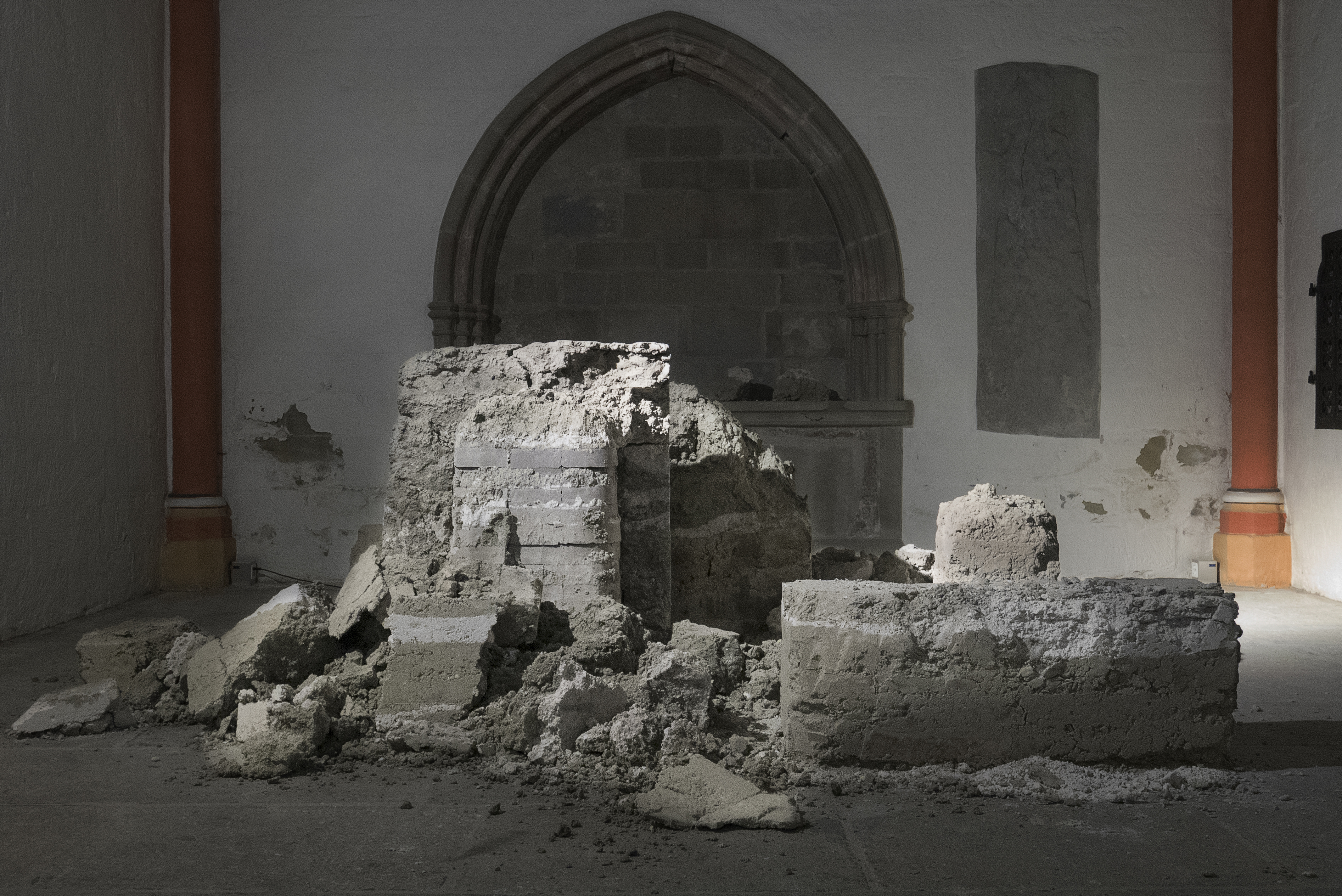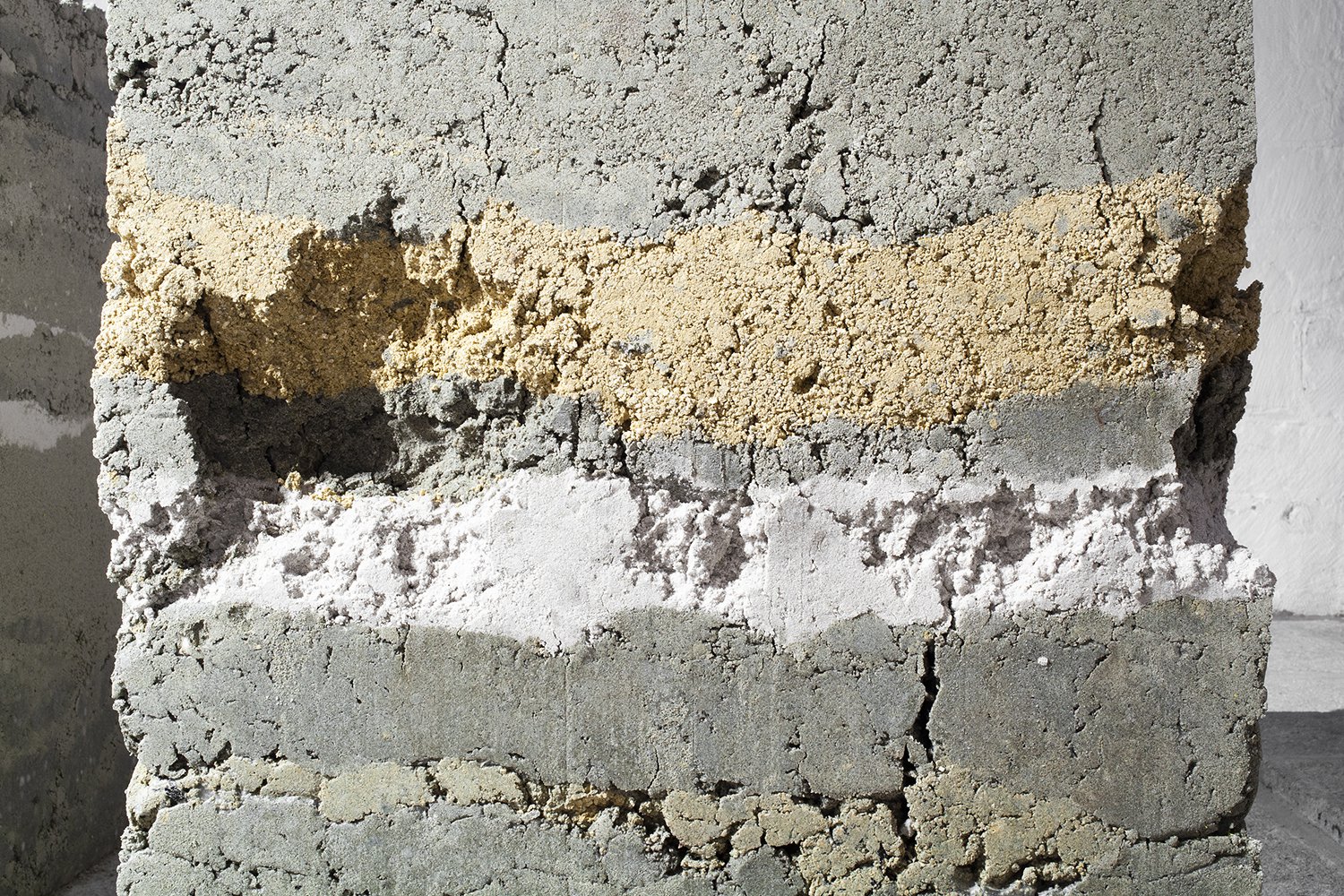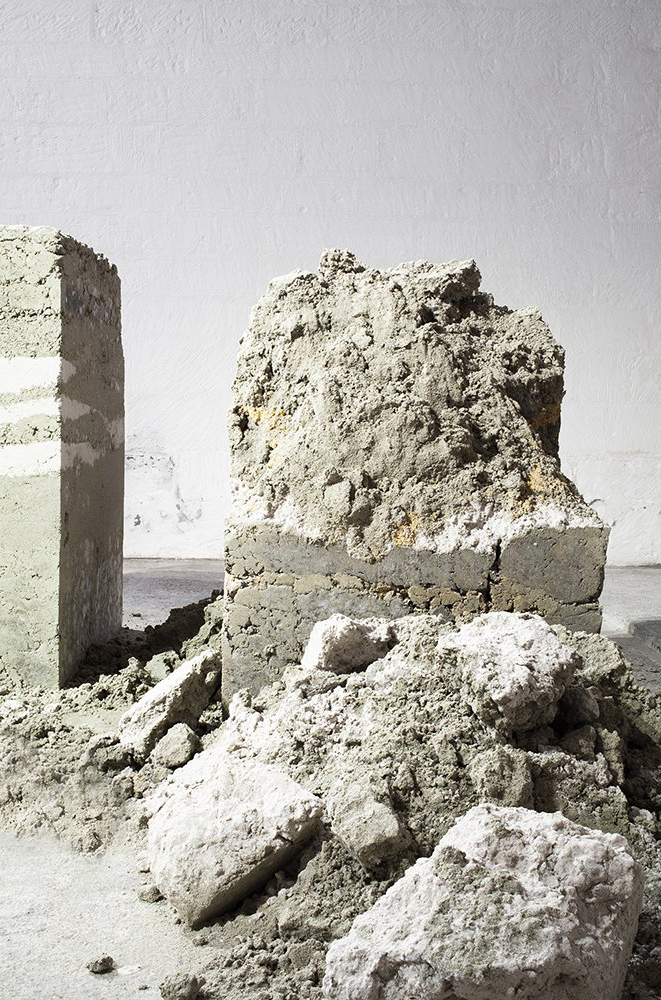





FUTUR ÂGE DE PIERRE
2019 – Lausanne Jardins
At first glance, Futur Âge de Pierre appears as a mineral underground garden. The rocks that make it up are the work of a living organism, the bacterium Bacillus pasteurii, capable of cementing sand from a solution of urea and calcium chloride. This relatively fast process (a few days), which allows the production of monoliths in situ, offers a counterfoot to the long term geological formation. In this garden evoking a petrified forest, life seems to be absent. But it is precisely the micro-organisms that allowed the rocks to originate and defined their shape and typology.
The space is transformed by this, borrowing from the prehistoric cave its aesthetics and its role of shelter and gathering place. The installation makes it possible to redefine both the perception and the use of an a priori austere place, while sensitizing the public to the incredible dynamism of the infinitely small, thanks in particular to the presence of images in the shop window. The organisation of events around the world of micro-organisms during the exhibition illustrates the possibilities of temporary reappropriation.
The biomineralization process opens up a wide range of potential applications for researchers, architects and designers. Civil engineering offers several opportunities, such as soil stabilization. Reducing the energy impact of building materials and techniques is also an important potential advance. Others imagine the use of this process to restore or create protective layers on heavily degraded buildings, notably through air pollution.
A garden that is part of innovation - thanks to a production technique firmly rooted in the 21st century - but also part of history.
︎︎︎ Lausanne Jardins 2019
2019 – Lausanne Jardins
At first glance, Futur Âge de Pierre appears as a mineral underground garden. The rocks that make it up are the work of a living organism, the bacterium Bacillus pasteurii, capable of cementing sand from a solution of urea and calcium chloride. This relatively fast process (a few days), which allows the production of monoliths in situ, offers a counterfoot to the long term geological formation. In this garden evoking a petrified forest, life seems to be absent. But it is precisely the micro-organisms that allowed the rocks to originate and defined their shape and typology.
The space is transformed by this, borrowing from the prehistoric cave its aesthetics and its role of shelter and gathering place. The installation makes it possible to redefine both the perception and the use of an a priori austere place, while sensitizing the public to the incredible dynamism of the infinitely small, thanks in particular to the presence of images in the shop window. The organisation of events around the world of micro-organisms during the exhibition illustrates the possibilities of temporary reappropriation.
The biomineralization process opens up a wide range of potential applications for researchers, architects and designers. Civil engineering offers several opportunities, such as soil stabilization. Reducing the energy impact of building materials and techniques is also an important potential advance. Others imagine the use of this process to restore or create protective layers on heavily degraded buildings, notably through air pollution.
A garden that is part of innovation - thanks to a production technique firmly rooted in the 21st century - but also part of history.